cactus
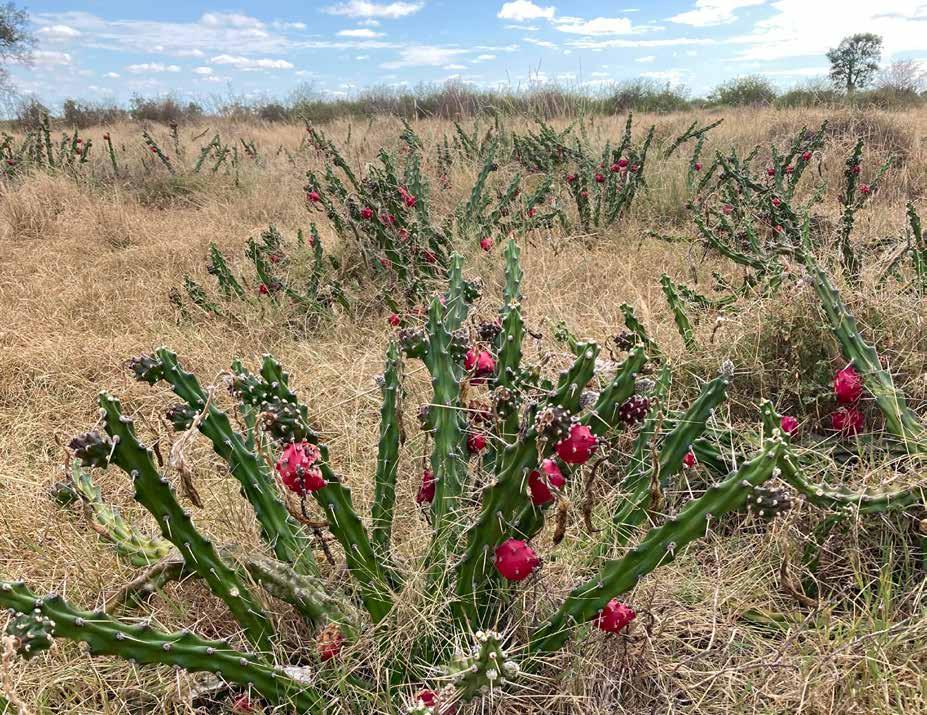
CONTINUING THE RAGE AGAINST HARRISIA!
The search continues
The quiet achiever
The importance of proper identification
How invasive is your cactus?
Wheel cactus in Uralla Shire Harrisia Cactus Tucumania tapiacola moth

CONTINUING THE RAGE AGAINST HARRISIA!
The search continues
The quiet achiever
The importance of proper identification
How invasive is your cactus?
Wheel cactus in Uralla Shire Harrisia Cactus Tucumania tapiacola mothDon’t let invasive cactus become an unwanted holiday hitchhiker!
Invasive non-native cactus species spread easily and rapidly through the landscape. They are costly to manage and seriously destroy farmland and biodiversity.
They have the potential to not only harm travelers, but also their pet companions. They also displace native flora and cause injury and sometimes death to native animals.
Invasive cactus has been found on tyres and shoes kilometres from where they first attached, aiding their spread across the landscape.
Please always check your boots, tyres and under all your vehicles for any unwanted hitchhikers.
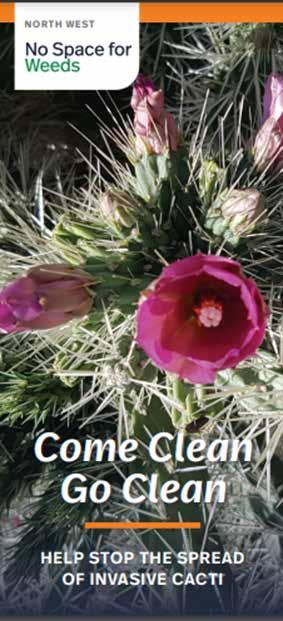
New incursions within the Narrabri LGA prompted a Harrisia information night at Baan Baa on 7 February 2024. This information night was held because of the concern of Harrisia spreading within the area.
Narrabri Shire Council’s Biosecurity
Officers Clare Felton-Taylor and Aaron Cross hosted this evening with guests Debi Bancroft the Harrisia Cactus Project Officer from Northern Slopes Landcare Association and landholder Richard Doyle, from Boggabilla NSW.
Richard and Clare both presented informative talks on Harrisia, discussing the threat that these weeds pose, control methods available and how the community can help stop the spread.
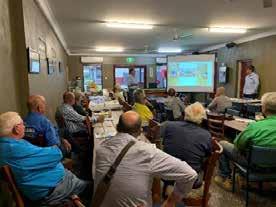
Debi discussed the importance of an integrated management plan for Harrisia and current biocontrol agents available. She also spoke about what help is available for both rural and peri-urban landholders.
This information night was well attended by concerned local people, who all agreed that more community engagement is needed to tackle Harrisia.
If you would like more information concerning Harrisia or would like to host an information event please contact: Debi Bancroft, Harrisia Cactus Project Officer. Northern Slopes Landcare 0438 353 519 cacti@nsla.net.au
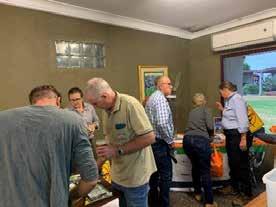
Cacti and most succulents are not native to Australia and are highly invasive. If you see an interesting cactus don’t be tempted to take a small souvenir cutting, take a photo instead and report its location to the closest Local Council’s Biosecurity Officer or NSW Department of Primary Industries 1800 680 244.
The cacti pictured is an example of Harrisia Cactus (Harrisia martinii). An invasive cactus that is native to South America and believed to be introduced into Australia possibly as an ornamental garden plant in the late 1800’s.
Introduced to Northern QLD Harrisia has now spread to both Southern QLD and Northwest of NSW. This photo was taken at Boggabilla, NSW. Photo Credit Debi Bancroft.
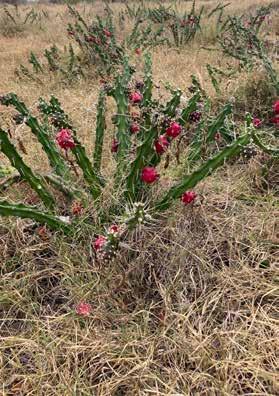
Staff from the Narrabri Shire Council, Northern Slopes Landcare Association and the Forestry Corporation of NSW took to the sky continuing the search for Harrisia Cactus (Harrisia martinii) concentrating on the Pilliga Forest and Baan Baa area.
With single plants being previously found, the concern is that there could be a much larger incursion of this invasive cactus within the Narrabri region.
The potential for this weed to continue to spread undetected is possible within the Pilliga because of the vast area of thick vegetation, and often inaccessible terrain.
“Harrisia Cactus plants are covered in bright red fruit, making them easy to spot from the air”, Northern Slopes Landcare Association’s Harrisa Cactus Project Officer, Debi Bancroft said.
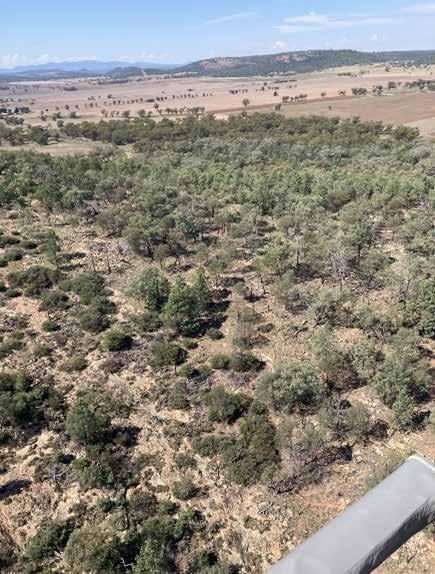

“Using a helicopter, we can inspect an area much quicker than on foot, making it easier and faster especially in difficult terrain like the Pilliga”.
There was no Harrisia Cactus spotted during the inspection, but staff mapped areas of concern, and these will be inspected from the ground.
Staff will continue with inspections and community awareness events.
For further information please contact: Clare Felton-Taylor 0427 294 771 or Debi Bancroft 0438 353 519.
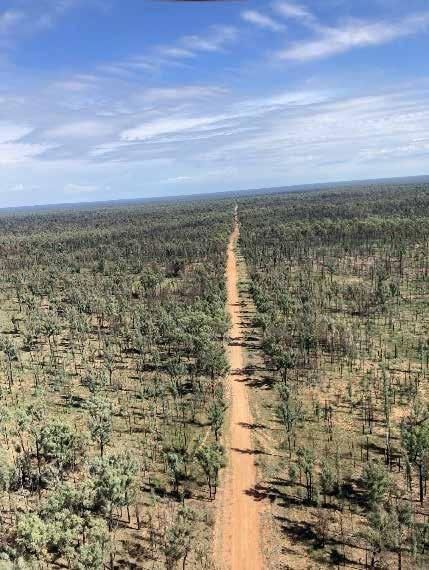
During extensive field surveys of Harrisia martinii infestations spanning from Charters Towers to Goondiwindi in Queensland, researchers from Biosecurity Queensland have repeatedly encountered a biological control agent for Harrisia cactus that has been somewhat overlooked.
The stem-feeding moth, Tucumania tapiacola, was consistently found damaging Harrisia Martinii stems at various field sites across Queensland.
During a recent excursion to discuss Harrisia infestations in NSW with Debi Bancroft (Harrisia Cactus Project Officer, Northern Slopes Landcare Association), Tucumania tapiacola larvae were discovered feeding on Harrisia stems at a property outside of Boggabilla.
Tucumania tapiacola (Lepidoptera; Pyralidae) is a species of snout-nosed moth introduced into Australia from Argentina in 1935 for the biological control of tiger pear (Opuntia aurantiaca).
Initially intended to control tiger pear, there was evidence suggesting the moth could also target other invasive cacti in Australia, including Harrisia spp., Opuntia humifusa (creeping pear), and Opuntia stricta (common prickly pear). However, the impact on these alternative hosts was expected to be minimal.
Over the past three years of field surveys, it has become evident that Tucumania tapiacola has a more significant impact on Harrisia martinii than previously anticipated, with no observed presence on common prickly pear.
Adult moths of Tucumania tapiacola have a wingspan ranging from 24 to 34 mm. Their forewings are dark grey-brown, while their hindwings are pearly white, darkening towards the outer edges.
Adult moths are primarily nocturnal, indicating that they likely lay eggs on Harrisia stems during the night. However, the damage caused by the stem-feeding larvae is easily identifiable.
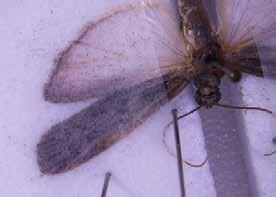

Each solitary larva tunnels within the cactus segments, often traversing between joints. Larval feeding frequently leads to secondary bacterial infections and further exploitation by other insects within the rotted stems.
In central Queensland, small black beetles are commonly observed within sections of stem rot caused by Tucumania tapiacola feeding.
Examination of blackened sections and tracks along Harrisia stems typically reveals the presence of larvae, which can vary in colour from brown to reddish-pink. Once fully developed, larvae construct cocoons either within hollowed-out stem segments, amidst debris, or just below the soil surface, from which the adult moth eventually emerges.
This biocontrol agent has proven to be a valuable addition to the integrated management of Harrisia Martinii. It’s worth noting that Harrisia mealybugs and moth larvae are often found coexisting on the same plants, causing significant combined damage that may result in plant mortality.
Tucumania tapiacola is a proficient flier capable of dispersing and establishing itself in suitable environmental conditions over time.
Despite lacking specific studies on the influence of temperature on development rates, it’s reasonable to assume that these rates may decrease during winter. However, larvae likely have the ability to overwinter within stems and emerge when temperatures rise.
While there may be some merit in relocating stems containing larvae to new infestations, the moths have demonstrated an ability to autonomously locate new habitats effectively.
If you find Tucumania tapiacola within infestations in NSW, please let us know so that we can start to understand the established range of this moth in Australia.
Article submitted by Tamara Taylor - Biosecurity Queensland
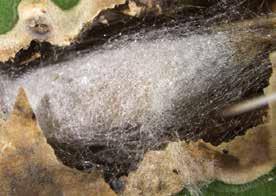
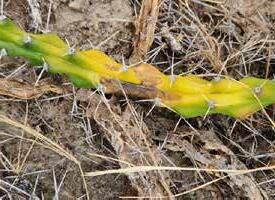
On Sunday November 12 2023, a fire began near the Narran Lake Reserve about 45 kilometres west of Grawin, NSW.
After weeks without rain and dry lightning strikes the fires began to burn closer to the Glengary, Grawin and Sheepyard communities which also burnt through Hudson Pear. The fires burnt over 22,000 Ha.
Inspections were carried out by Castlereagh Macquarie County Council biosecurity staff and initially there was evidence of active biocontrol agent still alive within the fire effected area.
Now 5 months after the fires with juvenile plants appearing the biocontrol has come back stronger, with the agent not only working on the original surviving plants but appears to be working on the juvenile plants.
The fires have also opened country up that was previously inaccessible, allowing for easier monitoring with chemical control where needed. Staff will continue to fight this invasive species by monitoring, spreading biocontrol and spraying.
For more information on biocontrol for Hudson Pear contact: Matt Savage, Castlereagh Macquarie County Council 0427 253 463



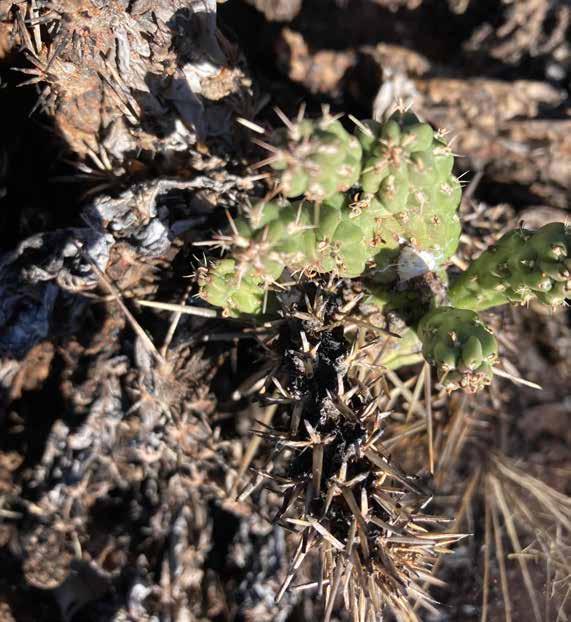
Local Land Services continues to lead the Hudson Pear program in collaboration with stakeholders including Castlereagh Macquarie County Council, NSW Department of Primary Industries, and land managers.
Community engagement continues to play a major role in the defence against Hudson pear, with local landholders being offered to help manage this weed with free chemical.
To continue to tackle the threat of this invasive weed landholders with Hudson pear on their properties in the Walgett and Brewarrina shires maybe eligible for free chemical.
This program is an excellent example of government, and landholders working together to tackle a problem that affects the whole community.
Interested landholders are encouraged to contact: Todd Pallister, NSW Local Land Services 0457 939 055
Visit the Northern Slopes Landcare Association webiste for a range of resources including an extensive video library that explains what it is, how to control it with cochineal, collecting cladodes, GPS mapping and much more. www.northernslopeslandcare.com.au
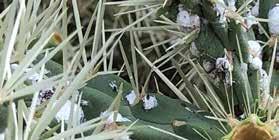
Mistaken identification has allowed Wheel Cactus to naturalise along the head waters of the Gwydir River within the Uralla LGA.
For possibly 40 years this incursion has been thought to of been prickly pear and left to multiply. The current population of Wheel Cactus within the New England Tablelands is limited to the Uralla LGA, the core infestation is in the Yarrowyck area with three other smaller incursions.
The main concern for this core incursions is that it is growing along the riparian zone of the head of the Gwydir catchment, which flows into the Murray Darling Basin system.
Brent Klohk, New England Weeds Authority found these incursions during roadside and routine property inspections, identifying this weed as Wheel Cactus and is now working towards total eradication.
Wheel Cactus has been added to the regional weed’s priority list for the Northern Tablelands for Eradication.
For further information please contact: Brent Klohk, Biosecurity Officer. New England Weeds Authority. 0472 662 139 bklohk@newa.nsw.gov.au
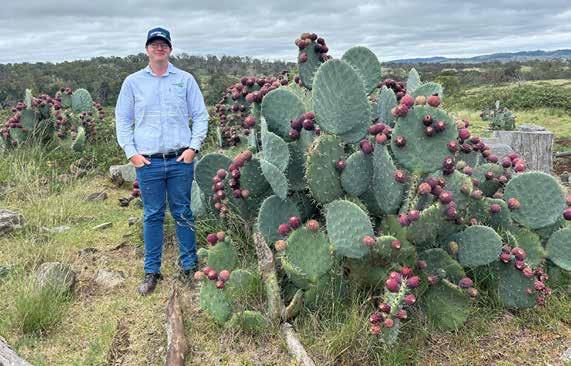

Have you visited the Department of Primary Industries WeedWise site lately?
You can now view priority weeds and where incursions are. Check out what weeds are popping up in your area and what you should be looking out for in your backyard, paddock, or mining claim.
It’s also a great way to help identify that “strange looking’’ plant that you’ve never seen before or if you just can’t seem to control that re-occurring weed.
WeedWise has a list of control options and methods that might just do the job. It also has a new feature that allows users to search for known incursions on a map.
You can also download the WeedWise app. Users experience different functions within the app depending on whether they are landholders, residents or weeds professionals.
Landholders and residents can enter the contact details of their local council weeds officer, and then directly report sightings of state priority weeds via email.
Weeds professionals can share information about a weed with clients via email, including a weed’s profile, bio-security duties, control advice and herbicide options.
NSW WeedWise includes the content contained in the NSW Weed Control Handbook, a free, publication from NSW Department of Primary Industries. Visit the WeedWise website for more information or download the WeedWise app in the Google or Apple app store.

Also known as Camuesa, cacti. Wheel cactus is an erect succulent plant with circular pads and yellow flowers. It forms dense thickets that restrict movement of people and animals.
This weed belongs to the group Prickly pears - Opuntias and must not be sold anywhere in NSW.
What does it look like?
Wheel cactus is a succulent shrub usually 1–2 m tall. Sometimes it is treelike with a distinct trunk and up to 4 m tall. Cacti pads have bumps on the surface called areoles. Spines, bristles, leaves, flowers, fruit, roots and new shoots all grow out of the areoles.
Stems (also called pads or cladodes) are:
• bluish green
• fleshy
• circular and flat
• up to 40 cm in diameter but usually 20–25 cm
• covered in small raised bumps (areoles) that have hair-like bristles and spines.
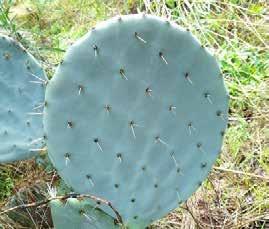
Spines are:
• up to 5 cm long
• brown or yellowish at the base
• white near the tip
• in clusters of 1-12 per areole
• sometimes absent.
Fruit are:
• pink, red or purple with dark red flesh
• round to oval
• up to 8 cm long and 6 cm in diameter.
Seeds are:
• round
• 3-5 mm in diameter.
Roots are:
• shallow, usually in the top 15 cm of soil
• fibrous
• spread out over many metres.
Flowers are:
• 5-8 cm in diameter
• yellow with reddish streaks on the underneath side of the petals
• often unisexual though sometimes one plant has three types of flowers: male, female and bisexual
• usually on the top section of the stems on both the edges and the faces.
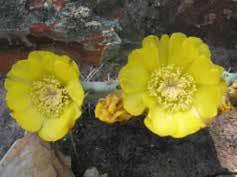
Where is it found?
In NSW, most infestations are in the Western Region. Plants have also been found in Uralla Shire on the Northern Tablelands, in the Bland Shire in the Riverina and in the Snowy Mountains in the South East. Wheel cactus is a native plant in Mexico. It was introduced into Australia as an ornamental plant.
What type of environment does it grow in? Wheel cactus grows in a wide range of climates. It mostly grows in arid, semiarid warm temperate and subtropical climates but it can tolerate cooler temperate areas.
It is very drought tolerant. Plants can survive extremely high temperatures up to 50 °C and low temperatures down to -7°C. It tolerates a wide variety of soil types and grows very well in shallow granite soils.
Successful weed control relies on follow up after the initial efforts. This means looking for and killing regrowth or new seedlings. Using a combination of control methods is usually more successful.
Act early by removing any individual plants before they spread. Do not grow wheel cactus in gardens or pots. Do not take cuttings of unknown cactus plants to grow out or share with others.
Avoid driving through areas with cacti. If you have been in an area with cacti check under vehicles, caravans, and machinery before leaving the infested area. Remove all plant parts using pliers or tongs. Dispose of them appropriately.
Dig up small or isolated plants using a mattock or other tools. Wear appropriate protective clothing and gloves to protect against injuries from the spines and bristles.
Larger infestations may be controlled by machinery. Ensure the roots are dug out and that all plant parts are disposed of.
Dispose of wheel cactus by burying it at least one metre deep or by burning in a hot fire. Check disposal sites regularly and control any seedlings. Contact your local council for information about other disposal options.
Two types of cochineal insect can effectively control large, dense infestations of wheel cactus:
• Dactylopius opuntiae ‘ficus’ lineage
• Dactylopius opuntiae ‘Mexican’ lineage.
Control will take several years. Biological control is suitable for areas that are environmentally sensitive, too difficult to access or where other methods would be too expensive. Cochineal insects are less effective on scattered infestations and may require redistribution at these sites.
There are several species of cochineal that look very similar. It is important to use the correct species of cochineal for each species of cactus. Contact your local council weeds officer for information about using cochineal to control wheel cactus.
The cactoblastis moth Cactoblastis cactorum attacks wheel cactus but only provides limited control.
Herbicides are especially useful for sparse, scattered infestations.
Spray when plants are actively growing. Thoroughly cover all parts of the plants with herbicide mix. Plants may regrow after spraying and follow up applications may be required.
Wear the appropriate personal protective clothing described on the herbicide label. Drill into the base of the stump with a long bit on a battery drill to avoid thorns and inject with a handheld injection gun and forestry spear.
Cacti are a major threat to Australia’s biodiversity being an introduced weed that is highly adapted to aridity, storing water in their thick leathery cladodes.
They practice crassulacean (CAM) acid metabolism, a method of photosynthesis that limits water loss by enabling carbon dioxide absorption and storage at night.
They are adept at moving through the landscape, their seeds spread by both native and feral animals, their cladodes can be spread by animals and vehicles and can also be carried water. The cladodes and sometimes fruit have numerous growing points (areoles) from which roots will grow.
These invasive plants can survive, and often benefit from drought, fire, grazing, and floods. They can regenerate from roots, a fallen fruit or flower or a single cladode that touches the ground. Seeds can survive within the soil, continuing to stay viable for decades.
Invasive species, including Cacti are the second largest threat to biodiversity after habitat loss. Species of cacti (principally members of the Opuntia and Cylindropuntia) are now present in all semi-arid and arid areas Australia.
Cacti species have a major impact on Australia’s biodiversity by:
• Directly compete with native flora, by limiting the growth of smaller plants. Often smothering the natural landscape resulting in a monoculture.
• Threaten the extinction to native flora and fauna species.
• Affects water availability, by changing the conditions of the environment making it unsuitable for native species to continue to grow.
• Creates habitat for invasive animal species such as the fox and cat.
• Creates habitat for other invasive weeds.
• Modifies habitat for smaller native species of animals, by smothering native grasses and smaller plants that are needed for food.
• Causes injuries and sometimes death to native birds and animals.
• Depletes the natural soil nutrients.
These non-native invasive plants are aggressive. Unless every effort is made to
“If Australians are to protect what is most distinctive about this country - our unique plants, animals and ecological communites - we urgently need to overcome the key threats facing them.”
(Invasive Species Council)
contain or eradicate them, the natural balance of Australia’s ecosystem will continue to be at risk. Resulting in the loss of native species and sometimes whole ecological communities.
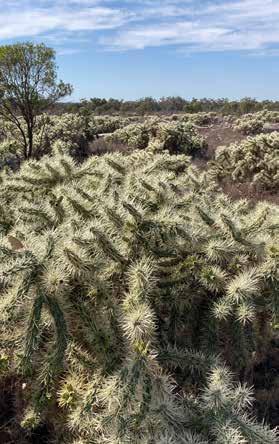
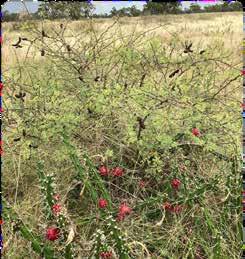


WeedScanTM — an app and website for identifying, reporting and mapping priority weeds in Australia
It’s difficult to manage what you can’t identify, and so it is with weeds!
WeedScan has been developed by the Centre for Invasive Species Solutions, CSIRO, the NSW Department of Primary Industries, the South Australian, Queensland and Victorian Governments and Atlas of Living Australia to help overcome this barrier.
Mobile apps like PlantSnap and PictureThis have revolutionised plant identification through artificial intelligence — instantly suggesting plant names based on a digital photograph.

The ability of accessible, rapid diagnostic tools to aid the early detection of new weeds is clear. However, existing plant identification apps are often paywalled and typically do not tell users whether their plant is a weed. They certainly don’t go the extra yard to link weed identification to relevant local weed management information or facilitate the reporting of priority weeds to government weeds staff.
WeedScan’s identification suggestions includes links to existing weed profiles, filtered according to the user’s state or territory, if known. Users are prompted to make a record if the weed is a priority in their state or territory and if they proceed, notifications may be sent to government weeds staff. Public WeedScan records will be visible on a map which can be viewed and searched by users.
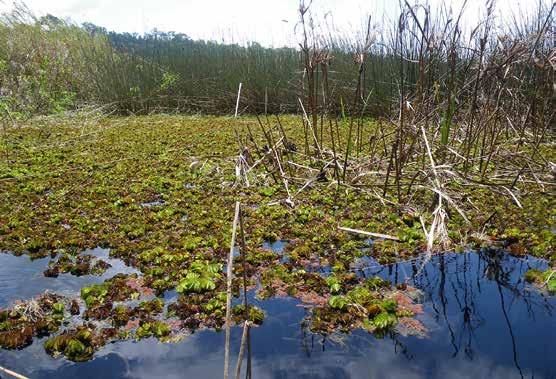
WeedScan’s artificial intelligence model has been trained by CSIRO to recognise approximately 270 priority weed species across Australia to help people identify weeds from their photos.
WeedScan is not just based on science, but has been rigorously tested in the field by farmers, community groups, agronomists, park rangers and Weeds and NRM officers across Australia. The link between identification and what to do if a weed has been identified must be tried and proven.
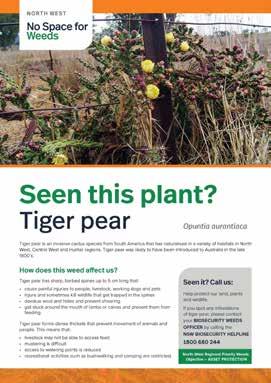
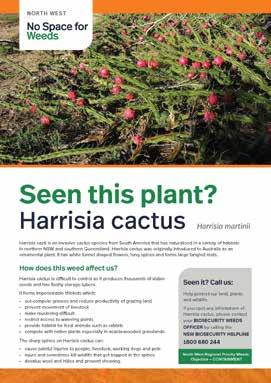
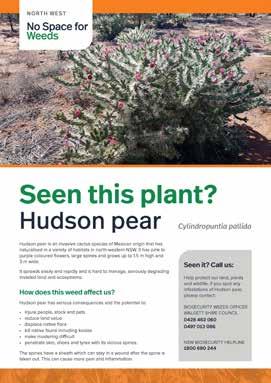
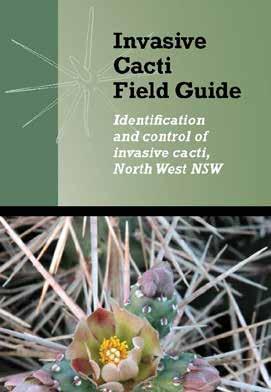
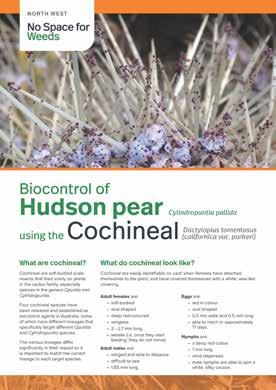
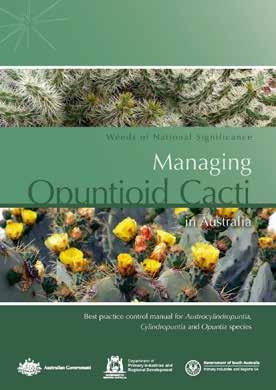
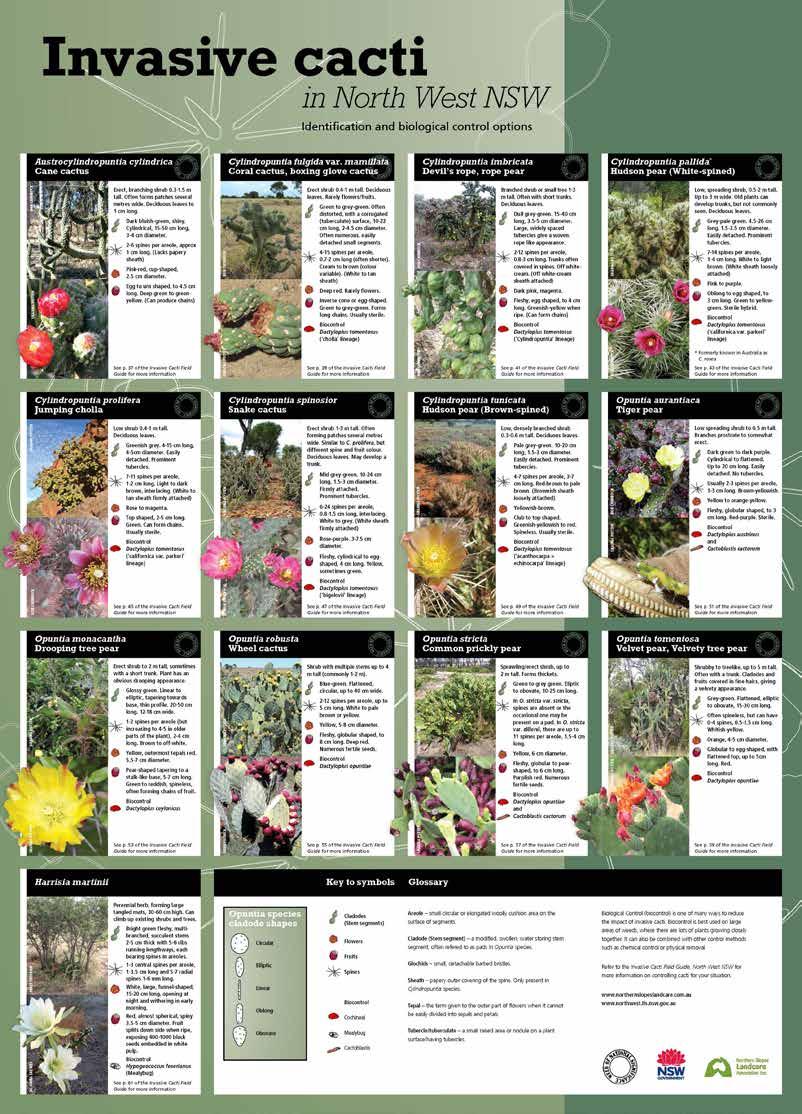
Hardcopies are available from Northern Slopes Landcare or download a copy
How invasive is your cactus?
mail@gwydir.nsw.gov.au
Andrea Fletcher-Dawson - 0428 462 060
Savage - 0427 253 463
Address
Fox Street
Walgett NSW 2832 Postal Address
Box 31 Walgett NSW 2832
Phone - 02 6828 6100
Email - admin@walgett.nsw.gov.au
- cacti@nsla.net.au
- trc@tamworth.nsw.gov.au

Websites
Australian Pesticides and Veterinary Medicinal Authority (APVMA)
Biological Control DPI
Department of Primary Industries (DPI)
DPI Weeds
NSW Biocontrol Weeds Taskforce
NSW WeedWise
North West Local Land Services (NW LLS)
Weeds Australia
PlantNET
Weed Control and Identification
Resources
Australian
Invasive
Opuntiod Cacti Best Practice Control Manual
Biodiversity



